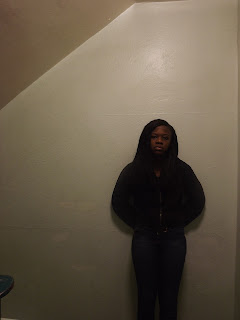In this presentation, I have spoken about how I have used the expected conventions of my magazine.
A COMPARISON OF MY MEDIA PRODUCT TO A SIMILAR MEDIA PRODUCT
Here is a visual comparison of both my front cover and an actual professional music magazine front cover that is on the market. You can see the similarities in conventions used, but you can also see the differences in other conventions that have been added in order to sell to the product to the audience. Similar conventions include the plugs, the distorted look of the mastheads and the USP (Unique Selling Point) of the magazine being one of the main focuses of the cover. Differences in the use of conventions however include the use of cover lines on my cover. Kerrang don't seem to have any noticeable, and this could count as disadvantage because the reader may not want to waste there time looking on the contents page for specific things they hope is included in the issue. Also, I have placed my main image in front of the masthead slightly as opposed to what Kerrang has done. This is so that it looks like a better use of ICT/Photoshop has been used. This may also up my advantage because the reader will take my magazine more seriously in terms of quality. One more difference includes the fact that my front cover is less crowded in comparison to the Kerrang cover. I did this purposefully, and this shows I have thought about my layout carefully - maybe even more so than Kerrang has. The fact that I have more space on my mine makes the front cover look sophisticated, and less cluttered if once again comparing to Kerrang. The reader won't feel they have too many things at once to look at, and will comprehend quickly what the magazine is about.
CHALLENGING CONVENTIONS
I think the one way my magazine has challenged conventions, is going against the stereotypes of what race is expected to like what type of music. I have got two people in as my main image on the front of my cover, but their ethnicity subverts the expected conventions. Stereotypically, people would say that a black people don't really listen to rock music, and would prefer rap, hip-hop etc. My magazine challenges this stereotype and I think I have done this well. My target audience may see this as an interesting addition to my magazine, as it is something that might capture their attention for being slightly unique.

















.JPG)





.JPG)
.JPG)

.JPG)







.JPG)














